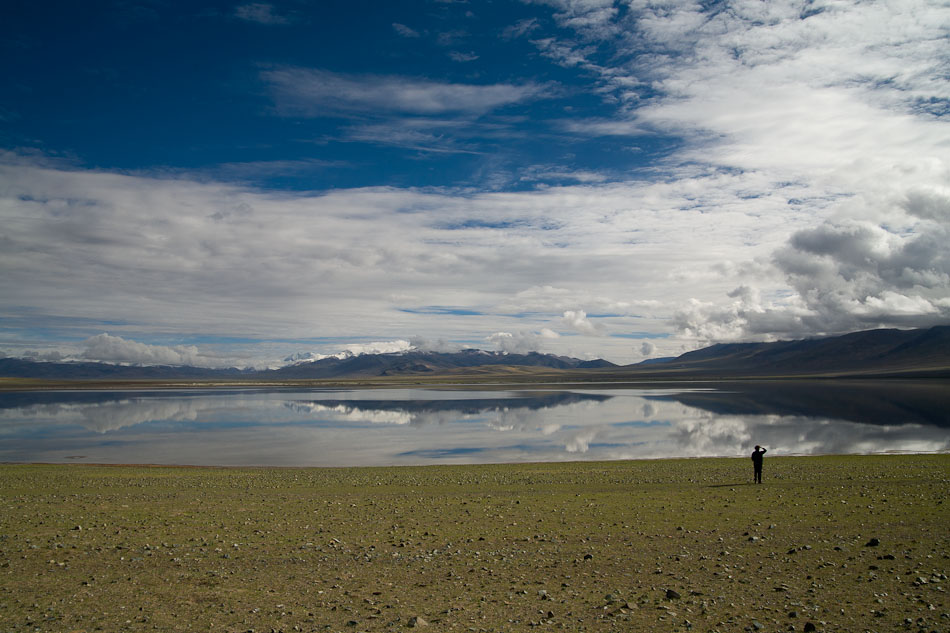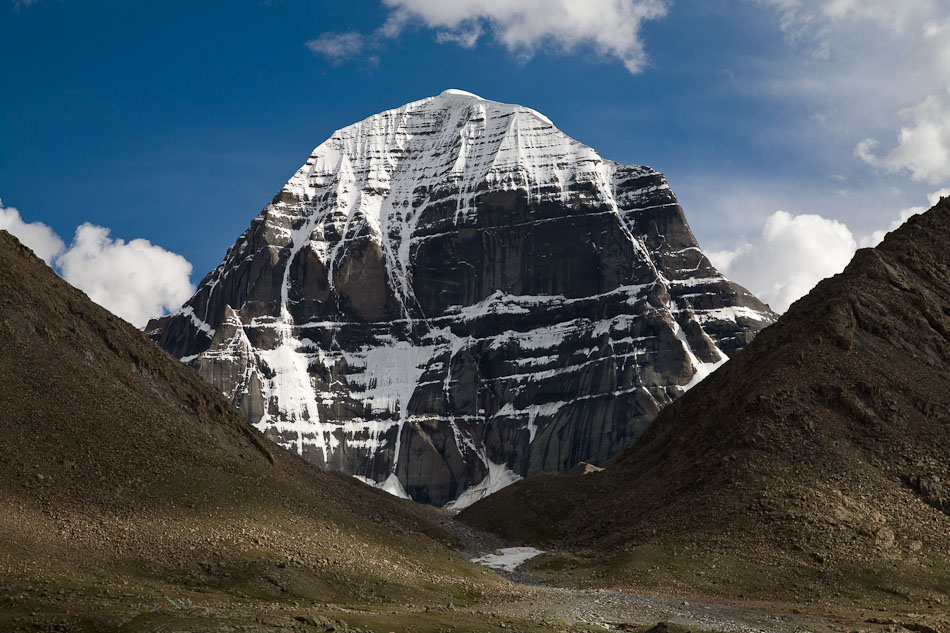After the resplendent Tashilhunpo and Sakya monasteries, the road west from Lhasa soon enters one of the most remote regions in the world. Outside the infrequent villages only herders seeking high summer pastures inhabit the wide valleys spotted with electric-blue lakes. These desolate stretches of earth girdled by impenetrable snowcapped mountains engender a sublime trepidation, as if one has trespassed upon an inhuman landscape fit only for the gods and demons that adorn the walls of local temples. Here heaven touches the earth and yields Tibet its undisputed title as the roof of the world.
Western Tibet, known as Ngari, also remains a land of pilgrimages, chief among them Mount Kailash. For Hindus Mount Kailash is the domain of Shiva, Lord of the Cosmic Dance – both destroyer and creator. For Tibetan Buddhists Mount Kailash is the domain of Demchok, a wrathful manifestation of Sakyamuni – the historical Buddha who set the Dharma Wheel in motion some 2,500 years ago. For all faiths that venerate Mount Kailash the pilgrimage culminates in a ritual circumambulation of the mountain. Hardy locals complete the 32-mile circuit in a single day. Such a physical feat was not on my agenda however, especially with an extra thirty pounds of camera equipment strapped to my back.
I opted for a three-day trekking plan in order to stay at the monasteries en route and enjoy the views of Mount Kailash’s magnificent faces. Even with the extra time the trek was no small feat – the trail’s altitude averaged at about 15,000 feet and crossed a pass over 18,000 feet on the second day. These heights compounded by the occasional hailstorm added to the surreal surroundings. Luckily the rarefied atmosphere only amplified my lightheaded musings. Sore thighs and shortness of breath were quickly forgotten as I snacked at the summit of the pass with a group of other pilgrims looking to wipe away a lifetime of sins through their pilgrimage to the sacred mountain.
The descent proved more formidable. My legs turned into jelly near the bottom of the pass, making a long break at one of the many dark nomadic tents doling out tea and noodles necessary. Here I relaxed with a group of young Tibetan men dressed to the nines for the important pilgrimage – heavy woolen coats were complemented by polished leather cowboy hats and colored sunglasses that even Bono would be embarrassed to wear in public. Their modish attire clashed amidst the older pilgrims who unwaveringly twirled prayer wheels while whispering mantras to the deities dwelling atop the surrounding peaks.
The dark corrugated faces of elderly Tibetans exhibited decades of weathering at the hands of bitter winters and a piercing sun. Despite the Chinese state’s attempts to raise the quality of life for scattered provincial populations, a large majority of Ngari still relied on herding and sustenance farming for survival. The Tibetan plateau’s harsh environment forgave little in their lifetimes and the long pilgrimage to Mount Kailash represented for some the ultimate appeal for release. The past decade has been an especially incongruous time for them though. The specter of imposed socioeconomic reforms and their entailing skewed notions of progress loomed ever large on the horizon.
Ngari encompasses a major swath of bleak tundra that persists relatively untouched by the commercial markets spreading from Lhasa. Still, like Kham in the east, newly built roads are slowly opening insular communities. Increasing numbers of trucks and tourists ply these once isolated routes and bring with them an all too familiar stream of consumer goods and ploys. I can only hope that the decisions as to what manner and extent these areas open up to the outside world remain in indigenous hands – a liberty not often granted to these supposedly autonomous regions.

